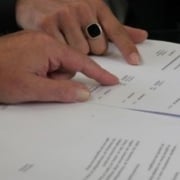4 undeniable challenges to translating lease agreements for large multinational companies
With its effective date of 2018, an important issue of the FASB’s most recent accounting standard (ASC 842) is the potential challenge that Lease Administrators, CFOs and accountants will have with translating lease agreements. Lease agreements for tangible assets outside the United States are now required to be recognized on balance sheets- making compliance more complicated. Globalization has resulted in an ever-increasing pressure on accountants, lease administrators, attorneys, and their firms to deal with fast, accurate, and cost-effective translations of leases. Service professionals should therefore make it a priority to thoroughly understand the challenges that are likely to arise when having leases translated.
The translation process of one lease agreement is straight forward. The translation of potentially dozens or even thousands of lease agreements for the purpose of complying with ASC 842 is very different. Here are the need-to-know challenges of translating lease agreements for ASC 842 compliance.
ASC 842 Lease Translation Process Challenges
1) High Volume
High volume sets the context for the translation process. The translation process must be as automated as possible, requiring a separate set of tools. This includes elements of file management, language detection, translation, project management and vendor management. Project managers must be highly specialized and well versed in the translation processes that balance quality, cost, and speed. Project managers must also have a high degree of availability and knowledge in order to estimate costs, monitor progress, anticipate and address problems, track translation workflows, and control all other phases of the workflow. Vendor management is vital in balancing quality (finding, testing, and onboarding translators) and costs. Given the pre-existing workloads for most professionals, meeting the demands presented by high volume can prove difficult.
2) File Format
Because lease contacts oftentimes include a wet signature, the most common file format of lease contracts is PDF. As PDF files, and graphic files in general, are not designed to be edited, most PDF-to-DOCX conversions result in garbled text that is incredibly difficult to read or translate. This complication is tremendously magnified when the fonts of the PDF are of a foreign language that includes diacritics, accent marks, and double-byte (i.e. typically Chinese or Japanese) characters. As a result, standard file conversion software is unhelpful for this part of the translation process.
3) The Standard Translation Process
The standard translation process, in accordance with the standard that governs our industry (ISO 17100:2015), is to use two bilingual specialist professional translators: one for translation and one for review. When applied to one lease agreement in PDF format of 50-100 pages, the cost can be between $2000 – $15,000 depending on source language and word count density. The cost could potentially be lower, but only marginally. Moreover, this same file would take a paired team of two professional translators 10 – 40 days to translate. This additional time burden could be unbearable when magnified by the file volume, even when utilizing dozens of teams while working within the context of the accountant’s workflow and filing schedule.
4) Technical Terminology
Typically, firms requiring high volume translations, or having a one-off need, seek low-cost translation solutions. While both a single-translator approach and in-house professional may initially appear cost-effective, they can be costly in the context of high volume, inconsistent need, and when mitigating risk from translation errors. The lack of speed (vital for volume), potential quality (lack of a bilingual contract, legal system or regulatory system terminology training), and cost (vital for scalability) make using in-house bilingual professionals and non-specialist translators problematic and risky from a legal and compliance point of view.
For translators, retaining language precision means taking the time to ensure that, word-for-word and clause-by-clause, lease agreements are accurately translated in order to reflect the legal intent of the original document. This could mean potentially having to decide between multiple variations of a single word that has many uses, or it could also mean not having one single directly translatable word. Blanket translations can come back to haunt service professionals if they fail to fully represent the goods, services, and legal obligations being described within the original lease agreement. A lease translation that fails to take into account language precision and proper word usage is a lease translation that could change the value of a lease agreement on a balance sheet.
While contract law may differ from legal jurisdiction to legal jurisdiction, most jurisdictions typically require some form of a “meeting of the minds” between the two parties to a contract. This mutual understanding of the terms and subject matter of a contract is essential to having a fully enforceable and binding lease. If a dispute happens to arise between the parties to a contract, and two similar, but still different, versions of the same contract are ambiguous in interpretation, it leaves the door open for the invalidation of the lease agreement. As Baker & McKenzie, Senior Counsel Preston M. Torbert quotes in his comprehensive study on the risks of ambiguity in contracting, “Ambiguity is the greatest cause of litigation over-drafted documents…”
One of the best ways to ensure that a foreign language lease agreement is fully enforceable is to prepare an accurate translation.
In Brief
The standard translation process, as well as similar alternatives, is not cost-effective nor optimal. Accountants, Lease Administrators, and lawyers must think twice about how to include the lease translation process into their own process for addressing ASC 842. To minimize the potential impact of these challenges, firms should consult the proper professionals and determine how to best tackle the FASB’s new standards of compliance.










